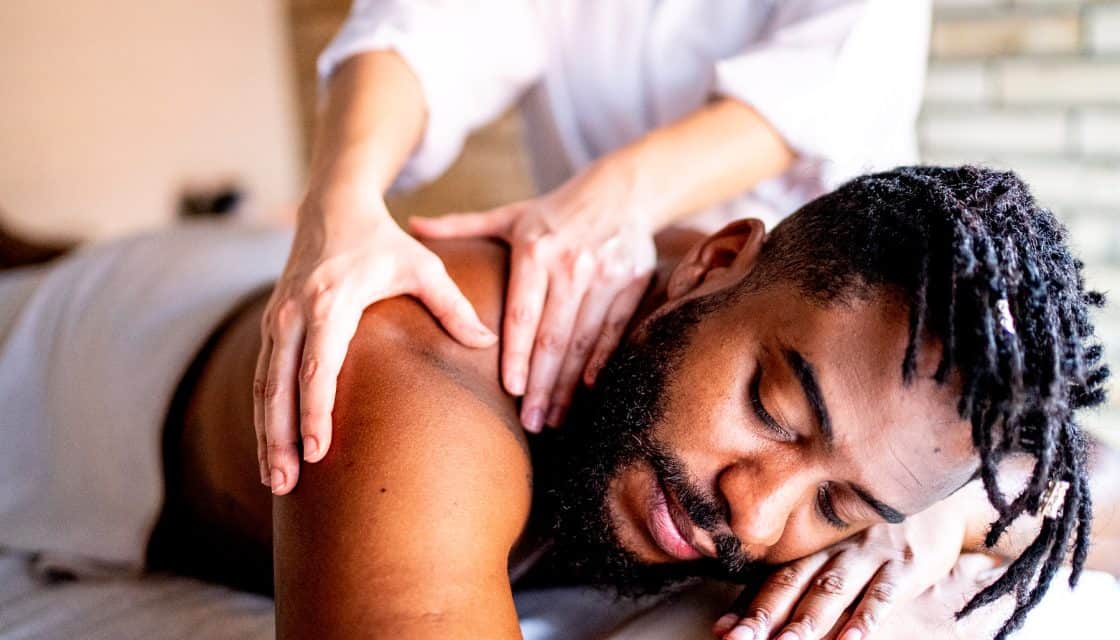
Working out takes many forms, from cardio like running and swimming to strength training like lifting weights and Pilates.
But no matter your exercise of choice, there’s always a risk of causing stress to your body. You’ve likely experienced this firsthand, whether that was soreness when you laughed two days after an ab workout or that twinge in your leg after a long run.
While you probably can’t eliminate postexercise discomfort, you can take concrete steps to improve recovery after a challenging workout.
Below, we’ve rounded up five things to do that could make a big impact on your physical well-being after a workout, ranging from how (and when) to hydrate to the potential benefits of cold-water immersion. Consider these techniques.
Get a massage
A massage isn’t just relaxing; it may boost your recovery after a challenging workout. According to the American College of Sports Medicine (ACSM), massage therapy after a tough workout may reduce muscle soreness, pain, inflammation and perceived fatigue. Massages can also reduce overall stress while improving relaxation and immune system functionality.
A meta-analysis evaluating different workout recovery strategies found that massage was the most powerful technique for improving delayed-onset muscle soreness and fatigue. Other helpful techniques discussed included cryotherapy and water immersion.
Depending on your workout, you can get a whole-body or a targeted massage. A massage should ideally take place after a workout and last at least 20 to 30 minutes, according to the ACSM. For a convenient option, check to see if your gym offers massage.
Consider cold-water immersion
Sometimes, there’s a moment in a workout when your muscles feel so sore that all you want is to soak them in cold water. This desire may come from a good instinct. A research review in Frontiers in Physiology found that cold-water immersion reduced delayed-onset muscle soreness and ratings of perceived exertion — though the review authors noted that higher quality research on the subject is needed.
Cold-water immersion can include ice but doesn’t have to — the research review included studies in which people were immersed in water at 59 degrees Fahrenheit or colder. This technique can also target areas, such as a swollen foot, by immersing only part of the body in water (and this means the entire body doesn’t need to freeze). Learn more about the potential pros and cons of ice baths and other cold therapies here.
A more involved (and expensive) version of cold-water immersion is whole-body cryotherapy. According to the ACSM, whole-body cryotherapy involves the use of a chamber filled with liquid nitrogen — which gets extremely cold, making the chamber minus 200 degrees Fahrenheit or even colder — for 2 to 3 minutes. You might expose a body part or your entire body to the cold. More research is needed on the practice, and it also comes with risks, such as frostbite. Mayo Clinic experts recommend that you check with your healthcare professional before trying whole-body cryotherapy.
Add in light exercise and stretching
It’s never good to go from zero to 100 and vice versa. Warm-ups get your blood flowing and the body stretched out before a workout. You might try walking for a few minutes or doing range-of-motion exercises like arm circles and leg swings. And when you’re done with the high-intensity part of your workout, don’t forget to do a cooldown and more stretches.
The ACSM recommends spending 5 to 10 minutes doing low-intensity cardio after a workout to gradually decrease your heart rate and prevent blood from pooling in your limbs. Cooling down isn’t linked to reducing muscle stiffness or soreness after exercise, but further research is needed to confirm.
After your cooldown, stretch the muscles you used for about 60 seconds. Stretches should not cause more than a slight discomfort.
Eat before and after a workout
You’re unlikely to find anyone who likes working out on a full stomach — but having some food in your stomach before exercising is essential. You burn carbohydrates as you work out, so eating them beforehand can help fuel your body. You can try a pre-workout drink or powder, but these aren’t necessary and the quality of such products varies. The American Heart Association website advises eating foods like whole-grain cereals and pasta, brown rice, fruits, and vegetables two hours before you work out. If you don’t have a chance to eat that far in advance or you spontaneously exercise, try eating a piece of fruit a few minutes before starting.
You generally don’t need to do anything during your workout besides hydrate (which we’ll get into below). But if your workout is longer than 60 minutes, it may help to have a carbohydrate-rich food or drink during the workout.
Try to eat carbohydrates and 20 to 30 grams of protein within a half hour of exercising to help your muscles recover and grow, Dr. Anastasi says.
Proteins are made up of 20 amino acids. The body can make 11 of these, called nonessential amino acids, but not the remaining nine, called essential amino acids. A food is considered a complete protein when it contains all nine essential amino acids. Some examples of complete proteins include:
- Peanut butter on wheat bread.
- Hummus with pita bread.
- Brown rice and black beans.
- Animal products like lean meats and eggs.
- Dairy products like chocolate milk.
- Tofu and soybeans.
When it comes to eating and exercise, everyone is different. So notice how you feel during your workout and how your overall performance is affected by what you eat.
Hydrate with water or a sports drink
Hydration is critical to ensure the body functions and recovers properly, so it’s necessary to drink before, while and after working out. Ideally, you’ll drink water, but workouts over an hour can merit a sports drink to boost electrolytes and energy.
Generally, you should drink about 2 to 4 milliliters of fluids per pound that you weigh between two and four hours before you exert yourself, the ACSM reports. Sweating during a workout dehydrates the body, so drinking while exercising also is critical to keep you going in the moment and improve your recovery.
Then there’s post-workout hydration, which ensures you don’t lose too much body weight. If you’re comfortable doing so, you can weigh yourself before and after a workout. Then, try to drink about 2 to 3 cups of water for every pound lost. If you don’t regularly weigh yourself, make a note of how much you need to drink following different types and lengths of exercise, and follow that general plan in the future.

Relevant reading
Future Care
A renowned cardiologist and Harvard professor spells out the future digital shift of medicine — and how it will impact the lives not only of patients and health care professionals but of all humans.




















